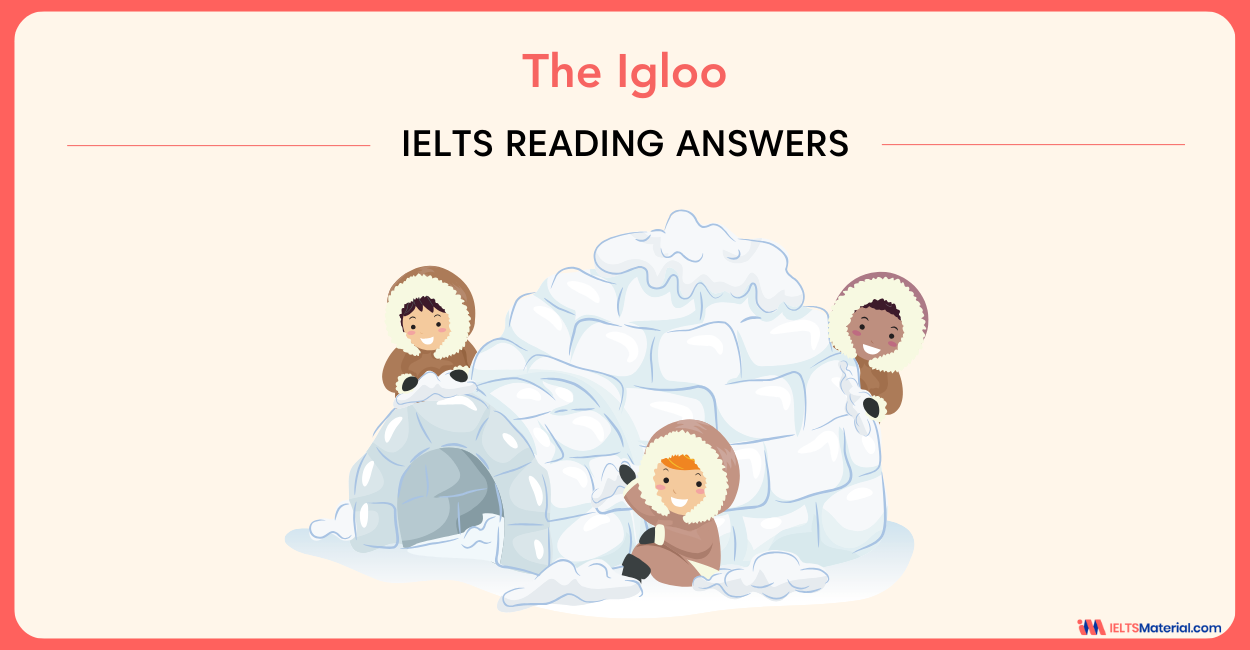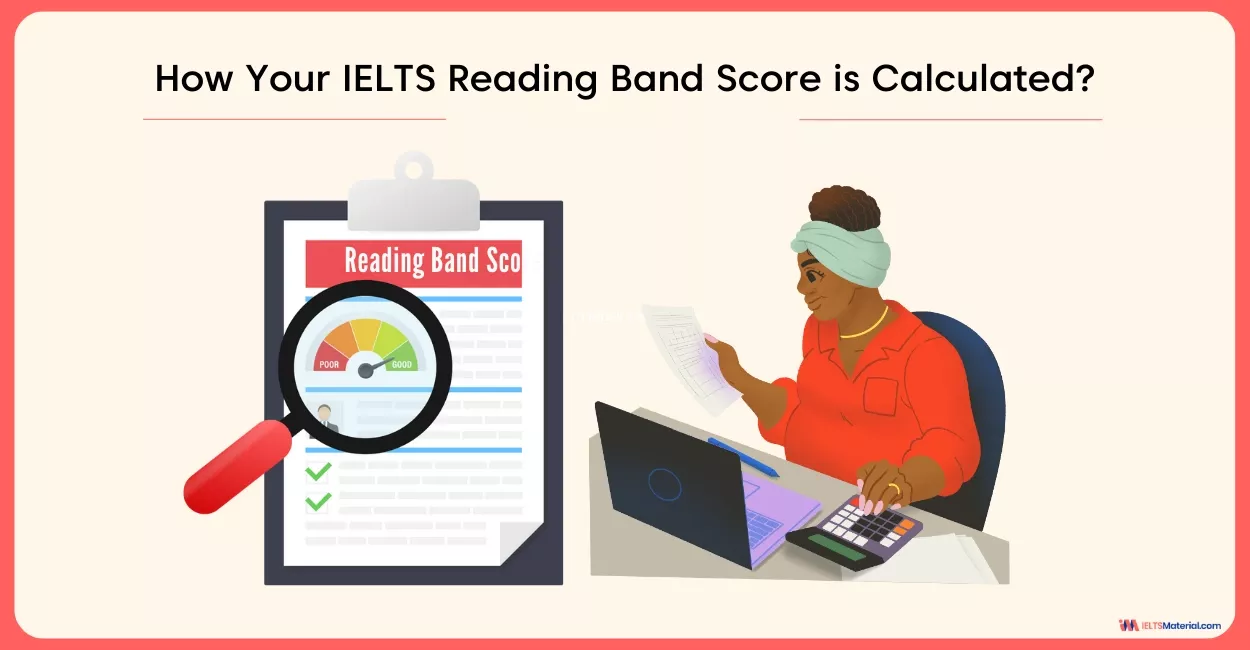High Speed High Rise Reading Answers
12 min read
Updated On
-
Copy link
High Speed High Rise Reading Answers is an IELTS Academic Reading passage that comes with 13 questions with matching questions, diagram labelling and completion questions. Take this reading test and prepare for a Band 9 in the IELTS Reading exam.
Table of Contents

Limited-Time Offer : Access a FREE 10-Day IELTS Study Plan!
Finding a balance between speed and accuracy is a common problem in IELTS reading. While reading quickly is important, missing key details can lead to incorrect answers. Mastering a balance between skimming and detailed reading ensures both efficiency and precision. So, to master this section, you should begin practising reading passages like the High Speed High Rise Reading Answers on a regular basis.
High Speed High Rise Reading Answers is an IELTS Academic Reading passage that discusses how Chinese entrepreneur Zhang Yue revolutionized construction with prefabricated, earthquake-proof skyscrapers that assemble like Lego bricks in just 15 days. Here, you will find questions of this IELTS recent actual test, along with explanations and locations for the answers, and tips on how to approach IELTS Reading with strategies. Let’s get started!
Reading Passage for High Speed High Rise Reading Answers
Go through the High Speed High Rise IELTS Reading Answers passage given below and prepare yourself for the reading section with this IELTS Reading practice test.
You should spend about 20 minutes on Questions 14-26 which are based on the Reading Passage.
High Speed High Rise
A Chinese entrepreneur has figured out a way to manufacture 30-story, earthquake-proof skyscrapers that snap together in just 15 days.
A Zhang Yue is founder and chairman of Broad Sustainable Building (otherwise known as ‘Broad’) who, on 1 January, 2012, released a time-lapse video of its 30-story achievement. It shows construction workers buzzing around like gnats while a clock in the corner of the screen marks the time. In just 360 hours, a 100-metre-tall tower called the T30 rises from an empty site to overlook Hunan’s Xiang River. At the end of the video, the camera spirals around the building overhead as the Broad logo appears on the screen: a lowercase that wraps around itself in an imitation of the @ symbol. The company is in the process of franchising its technology to partners in India, Brazil, and Russia. What it is selling is the world’s first standardized skyscraper and with it, Zhang aims to turn Broad into the McDonald’s of the sustainable building industry. When asked why he decided to start a construction company, Zhang replies, ‘It’s not a construction company. It’s a structural revolution.
B So far, Broad has built 16 structures in China, plus another in Cancun. They are fabricated at two factories in Hunan, roughly an hour’s drive from Broad Town, the sprawling headquarters. The floors and ceilings of the skyscrapers are built in sections, each measuring 15.6 by 3.9 meters with a depth of 45 centimeters. Pipes and ducts for electricity, water and waste are threaded through each floor module while it is still in the factory. The client’s choice of flooring is also pre-installed on top. Standardized truckloads carry two modules each to the site with the necessary columns, bolts and tools to connect them stacked on top of each other. Once they arrive at the location, each section is lifted by crane directly to the top of the building, which is assembled like toy Lego bricks. Workers use the materials on the module to quickly connect the pipes and wires. The unique column design has diagonal bracing at each end and tabs that bolt into the floors above and below. In the final step, heavily insulated exterior walls and windows are slotted in by crane. The result is far from pretty but the method is surprisingly safe – and phenomenally fast.
C Zhang attributes his success to his creativity and to his outsider perspective on technology. He started out as an art student in the 1980s, but in 1988, Zhang left the art world to found Broad. The company started out as a maker of non-pressurized boilers. His senior vice-president, Juliet Jiang, says, ‘He made his fortune on boilers. He could have kept doing this business, but ... he saw the need for nonelectric air-conditioning.’ Towards the end of the decade, China’s economy was expanding past the capacity of the nation’s electricity grid, she explains. power shortages were becoming a serious obstacle to growth. Large air-conditioning (AC) units fueled by natural gas could help companies ease their electricity load, reduce overheads, and enjoy more reliable climate control. Today, Broad has units operating in more than 70 countries, in some of the largest buildings and airports on the planet.
D For two decades, Zhang’s AC business boomed. But a couple of events conspired to change his course. The first was that Zhang became an environmentalist. The second was the earthquake that hit China’s Sichuan Province in 2008, causing the collapse of poorly constructed buildings. Initially, he says, he tried to convince developers to refit existing buildings to make them both more stable and more sustainable, but he had little success. So Zhang drafted his own engineers and started researching how to build cheap, environmentally friendly structures that could also withstand an earthquake. Within six months of starting his research, Zhang had given up on traditional methods. He was frustrated by the cost of hiring designers and specialists for each new structure. The best way to cut costs, he decided, was to take the building to the factory. But to create a factory-built skyscraper, Broad had to abandon the principles by which skyscrapers are typically designed. The whole load-bearing structure had to be different. To reduce the overall weight of the building, it used less Q9 concrete in the floors; that in turn enabled it to cut down on structural steel.
E Around the world, prefabricated and modular buildings are gaining in popularity. But modular and prefabricated buildings elsewhere are, for the most part, low- rise. Broad is alone in applying these methods to skyscrapers. For Zhang, the environmental savings alone justify the effort. According to Broad’s numbers, a traditional high-rise will produce about 3,000 tons of construction waste, while a Broad building will produce only 25 tons. Traditional buildings also require 5,000 tons of water onsite to build, while Broad buildings use none. The building process is also less dangerous. Elevator systems – the base, rails, and machine room – can be installed at the factory, eliminating the risk of injury. And instead of shipping an elevator car to the site in pieces, Broad orders a finished car and drops it into the shaft by crane. In the future, elevator manufacturers are hoping to preinstall the doors, completely eliminating any chance that a worker might fall. ‘Traditional construction is chaotic,’ he says. ``We took construction and moved it into the factory.’ According to Zhang, his buildings will help solve the many problems of the construction industry and what’s more, they will be quicker and cheaper to build.
High Speed High Rise Reading Answers Questions
There are 13 questions in High Speed High Rise Reading Answers, which include three different IELTS Reading question types. They are:
- IELTS Reading Matching Headings to Paragraphs (Q. 14-18)
- IELTS Reading Diagram Completion (Q. 19-22)
- IELTS Reading Sentence Completion (Q. 23-26)
Use a timer; complete the questions before time runs out!
Questions 14-18
The text on the following pages has five paragraphs, A-E.
Choose the correct heading for each paragraph from the list of headings below.
Write the correct number, i-viii, in boxes 14-18 on your answer sheet.
List of Headings
i A joint business project
ii Other engineering achievements
iii Examining the overall benefits
iv A building like no other
v Some benefits of traditional methods
vi A change of direction
vii Examples of similar global brands
viii From factory to building site
14 Paragraph A
15 Paragraph B
16 Paragraph C
17 Paragraph D
18 Paragraph E
Questions 19 - 22
Label the diagram below.
Choose ONE WORD ONLY from the text for each answer.

19 ...............
20 ...............
21 ...............
22 ...............
Questions 23-26
Complete the sentences below.
Choose NO MORE THAN TWO WORDS from the text for each answer.
23Zhang refers to his business as a............
24 The first products Broad manufactured were.....................
25 In the late eighties,..................................were holding back industrial progress in China.
26 In addition to power and cost benefits, Broad's AC units improve ...................
Download the High Speed High Rise Reading PDF for future practice!
High Speed High Rise IELTS Reading Answers with Location and Explanation
Have a look at the High Speed High Rise answer key with detailed explanation and answer location. It will help you tally your answers as well as give you an idea of which question type to focus on achieving a good IELTS band score in the reading module.
| Question number | Answer | Explanation |
|---|---|---|
| 14 | iv | In paragraph A, the author states that “in just 360 hours, a 100-meter-tall tower called the T30 rises from an empty site to overlook Hunan’s Xiang River.” Another line author mentions that ‘what is selling is the world’s first standardized skyscraper and with it, Zhang aims to turn Board into the McDonald’s of the sustainable building industry.’ Both these lines suggest the uniqueness of the building. Hence, the appropriate heading is “iv.” |
| 15 | viii | A line in paragraph B mentions that “pipes and ducts for electricity, water and waste are threaded through each floor module while it is still in the factory.” Another line states, ‘only when they arrive at the location, each section is lifted by crane directly to the top of the building.’ As a result, these lines clearly mention the processes happening from the factory to the industry site. Hence, the appropriate heading is “viii.” |
| 16 | ii | According to the line in paragraph C, “Juliet Jiang, says ‘He made his fortune on boilers. He could have kept doing this business. He could have kept doing this business, but he had the need for nonelectric air conditioning.” Similarly, it also mentions that ‘large air-conditioning units fueled by natural gas could help companies ease their electricity load, reduce overheads, and enjoy more reliable climate control into the bargain.’ These lines state the example of engineering achievements such as reducing overheads, more electricity, etc. Hence, the appropriate heading is “ii.” |
| 17 | vi | Paragraph D puts forward the idea that “but a couple of events conspired to change his course.” The phrase ‘change of course’ refers to a change in direction. Hence, the appropriate heading is “vi.” |
| 18 | iii | The last line of paragraph E conveys that “according to Zhang, his buildings will help solve the many problems of the construction industry and what;s more, they will be quicker and cheaper to build.” He says it’s going to solve many problems, which implies that he’s examining the overall benefits. Hence, the appropriate heading is “iii.” |
| 19 | factory | In paragraph B, there’s a line that mentions that “pipes and ducts for electricity, water and waste are threaded through each floor module while it is still in the factory.” This line implies that pipes and ducts are installed in the factory. Hence, the correct answer is “factory.” |
| 20 | flooring/floor | A line in paragraph B infers that “the client’s choice of flooring is also pre-installed on top.” Therefore, if the flooring is made according to the client’s choice, then the flooring is chosen by the customer. Hence, the correct answer is “flooring/floor.” |
| 21 | columns | A line in paragraph B infers that “the unique column design has diagonal bracing at each end and tabs that bolt into the floors above and below.” The above line confirms that its columns have diagonal bracing at the top and bottom. Hence, the correct answer is “columns.” |
| 22 | concrete | The last line of paragraph D confirms that “to reduce the overall weight of the building, it issued less concrete in the floors; that in turn enabled it to cut down on structural steel.” Therefore, the sections contain less concrete than conventional buildings. Hence, the correct answer is “concrete.” |
| 23 | Structural revolution | The last line of paragraph A mentions that “when asked why he decided to start a construction company, Zhang replies, it’s not a construction company. It’s a structural revolution” From this line, we can deduce that Zhang refers to his business as a structural revolution. Hence, the correct answer is “structural revolution.” |
| 24 | boilers | In paragraph C, a line claims that “the company started out as a maker of non-pressurized boilers.” Since the company started with non-pressurized boilers, it implies that the first products Broad manufactured were boilers. Hence, the correct answer is “boilers.” |
| 25 | power shortages | In paragraph C, a line states that the thing holding back industrial progress in China in the late eighties was power shortages. Since “power shortages were becoming a serious obstacle to growth.” Hence, the correct answer is “ power shortages.” |
| 26 | Climate control | As per paragraph C, “large air-conditioning units fueled by natural gas could help companies ease their electricity load, reduce overheads, and enjoy more reliable climate control into the bargain.” The aforementioned line confirms that Broad’s AC units improve climate control in addition to power and cost benefits. Hence, the correct answer is “climate control.” |
Tips to Solve the Question Types in High Speed High Rise IELTS Reading Answers
Now that you have the answers and explanations for High Speed High Rise Reading Answers, let’s explore some IELTS exam reparation tips for band score of 8+ by answering the three question types.
Matching Headings:
You must match the heading in this type of question to the appropriate paragraph or reading segment in the text to score a high IELTS band score. Your ability to figure out the paragraph’s key concept and its supporting ideas will be put to the test.
- Take your time to rephrase the potential headings’ keywords.
- Find the main idea from the paragraphs. Sometimes the essential idea of the paragraph is expressed in the header.
- For clarification on the paragraph’s main idea, see the first and last sentences. Likewise, quickly scan the middle of the paragraph to make sure you comprehend it.
- Don’t try to match words. Your primary goal is to match a correct paragraph.
- Choose the heading that best fits the paragraph after reading it again if two seem to be appropriate.
- The number of headings will always be greater than the number of paragraphs or sections. Therefore, some headings will never be utilized.
Diagram Completion:
The way to solve the diagram completion questions of the IELTS Reading is similar to IELTS Reading Table Completion. You will be asked to fill in the blanks in a small passage given in the form of a diagram with the relevant words or numbers. So, let us revise the strategies.
- Read the instructions carefully. It will help you determine the word limit (no more than two, one word, etc) and important terms like ‘using words from the text’ or ‘from the text’. You have to follow these strictly.
- Go through the incomplete diagram first. Also, think about keywords and how they could be represented by synonyms or paraphrasing.
- Locate where the information is by scanning quickly. If you can’t, move on.
- Study the reading text by using the skimming and scanning techniques. It will help to establish the answer quickly. When scanning for your answer, make sure you are thinking about paraphrasing and synonyms.
- The answers appear in the same order as the questions. Also, check your spelling and remember that your answer should be grammatically correct.
Sentence Completion:
In the sentence completion of IELTS Reading, you will be asked to fill in the blanks in incomplete phrases with the relevant words or numbers.
- Read the instructions carefully. It will help you determine the word limit (no more than two, one word, etc) and important terms like ‘using words from the text’ or ‘from the text’. You have to follow these strictly.
- Read the incomplete sentences first. Also, think about keywords and how they could be represented by synonyms or paraphrasing.
- Locate where the information is by scanning quickly. If you can’t, move on.
- Study the reading text by using the skimming and scanning techniques. It will help to establish the answer quickly. When scanning for your answer, make sure you are thinking about paraphrasing and synonyms.
- The answers appear in the same order as the questions. Also, check your spelling and remember that your answer should be grammatically correct.
In conclusion, IELTS Reading samples like High Speed High Rise Reading Answers are essential to the reading exam preparation. Through these, you'll adapt to the test format, enhance your reading speed, and discover areas needing improvement. Therefore, keep taking these tests to achieve your goals.
Check More IELTS Reading Answers
- Why Are Finland's Schools Successful? IELTS Reading Answers
- When Conversations Flow - IELTS Reading Answers
- Secrets of the Swarm Reading Answers
- Spider Silk 2 Reading Answers
- Wolves Dogs And Humans Reading Answers
- The Feminist Missionary Reading Answers
- The Sweet Scent Of Success Answers
- Storytelling Reading Answers
- Designing And Shipping Reading Answers
Practice IELTS Reading based on question types

Start Preparing for IELTS: Get Your 10-Day Study Plan Today!
Explore other Reading Topics

Kasturika Samanta

Kasturika Samanta

Kasturika Samanta

Kasturika Samanta
Recent Articles

Nehasri Ravishenbagam

Haniya Yashfeen

Haniya Yashfeen

Haniya Yashfeen




Post your Comments